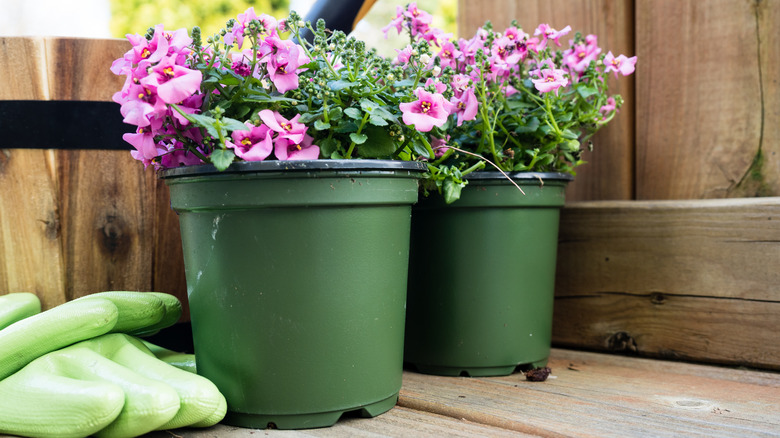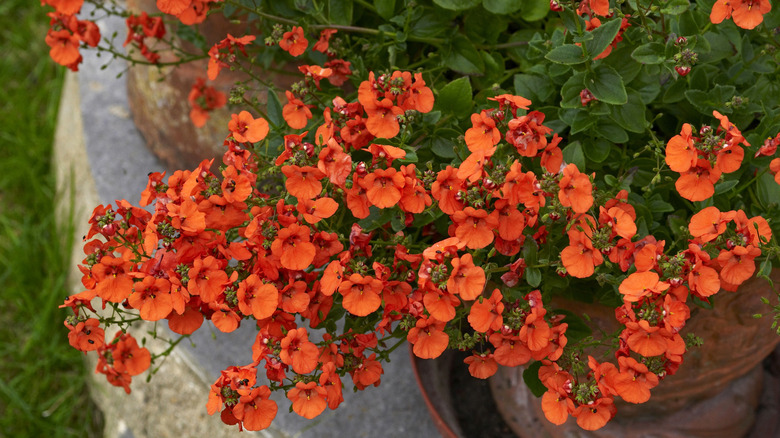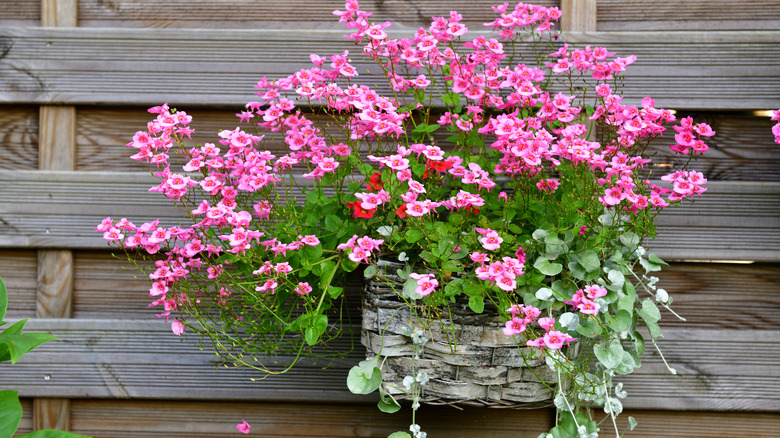Planting Diascia Flowers Is An Easy Way To Add Blooms From Spring To Fall
Twinspur (Diascia spp.) is a perfect option for gardeners looking to add some color to their cool-season gardens and hanging baskets. Over the past few decades, the varieties of diascia available have grown exponentially, and there's now a diascia plant to fit almost every need or color palette. After providing a spectacular show in spring, diascia often takes a break during the hottest months of the summer, only to come roaring back in autumn to impress with even more blooms.
Despite not being native to the Americas, diascia is not invasive or aggressive, so you don't need to worry about planting it in the ground. Native to South Africa, diascia has similar care and growing needs to snapdragons, which it is closely related to. Like snapdragons, twinspur also benefits from regular deadheading of spent blooms and should be cut back after its spring flush of flowers is finished. This helps ensure plenty of blooms for fall.
Caring for diascia
Diascia grows best in full sun or part shade locations and requires well-draining and moist soil. Ideally, the soil pH should be in the neutral range of between 6.0 and 8.0. Using a soil test to measure the pH of your garden will help ensure growing conditions are perfect for your plants. Because of how quickly diascia grows and how prolifically it flowers, it also benefits from regular low-ammonium fertilizing to keep it going strong.
Twinspur grows and flowers best when daytime temperatures are in the 70s and nighttime temperatures don't fall below 50 degrees Fahrenheit. It often struggles in high humidity. While many varieties of twinspur are only perennial in zones 8 through 11, newer cultivars like 'Coral Canyon' are hardy down to zone 5. Diascia can also be grown as an annual in colder zones and makes for an excellent houseplant as long as its needs for good lighting are met.
Using diascia in the garden
There are a wide variety of twinspur cultivars on the market now, but most do not grow over 12 inches to 15 inches. This makes diascia perfect for the front of borders where its stunning flowers won't be hidden behind larger plants. Many varieties of twinspur also spread up to 18 inches wide, quickly filling in empty spots in gardens and creating a blanket of flowers.
Twinspur is also a perfect flower for hanging baskets on your porch, and it looks beautiful on its own and when mixed with other plants. It is an excellent option for both a filler and a spiller element when designing a container garden. Diascia is not fragrant and won't compete or clash with heavily scented flowers. It isn't just appealing to people either; bees and butterflies will find your yard irresistible with this flower in your garden. This means you won't just have beautiful flowers to enjoy all season but also plenty of pollinators.



